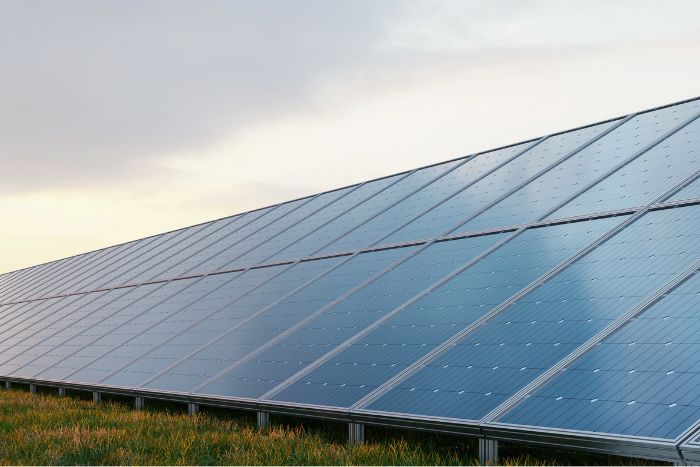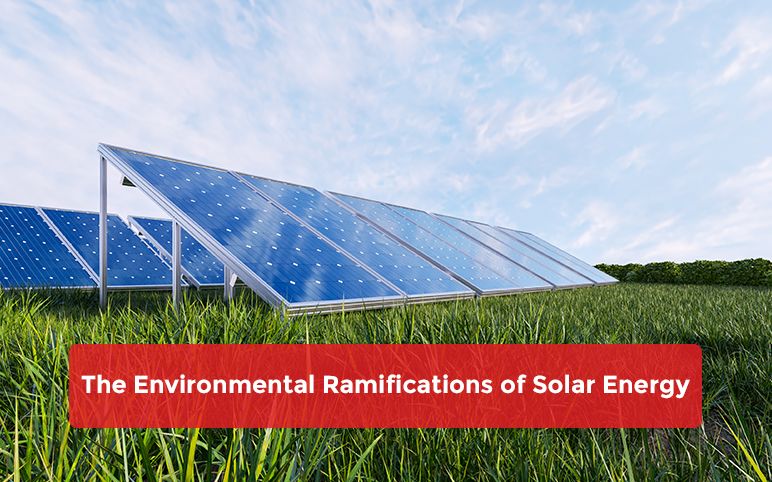The sun is an enormous power source that has only lately been discovered. It has vast resources that can be used to generate adequate, non-polluting, and long-term energy, culminating in zero greenhouse
emissions. Solar energy has recently been revealed to be able to be gathered and stored on a worldwide scale, to eventually displace oil and coal. Solar energy has become increasingly important as the
globe shifts its emphasis to low-carbon technologies.
Solar systems, relative to traditional energy sources, provide significant ecological benefits, and hence greatly affect the long progress of modern operations. However, large-scale installation of such
technologies can sometimes have significant adverse hazards. Some users may see these potential issues to be a significant obstacle to further improvement of these technologies.
The costs and benefits of renewable energy can be classified into a variety of categories, including land-use effects, environmental consequences, water, air, and soil influences, and other repercussions,
and can vary considerably based on the technology, which can be divided into two broad categories:
● Solar panels with photovoltaic (PV) technology, often known simply as photovoltaic (PV)
● Solar thermal power plants that are concentrated (CSP).
Solar Energy's Environmental Effects
Solar energy installations require enormous areas for energy gathering to generate power at a utility scale. As a result, the amenities may obstruct existing property activities and have an impact on the
utilization of habitat and leisure program areas.

Power imprints can become gradually high as power generation influences land via materials discovery, mining, production, and waste. As a result, some of the territories may be used for power in such a
way that restoring to a pre-disturbed condition requires a considerable amount of energy, effort, or even both, and other applications are so drastic that the alterations suffered are permanent.
ntal Effects on Ground, Freshwater, and Atmospheric Supplies
The development of solar installations on large swaths of land necessitates cutting and leveling, which leads to soil structure, water channel disruption, and storm water runoff. Centralized tower air
conditioning systems necessitate the use of fresh water, which is a problem in arid areas since changes in water consumption may put a burden on freshwater sources, and also chemical leaks from the
buildings, contaminating water or the earth's surface.
The installation of solar energy generating plants, like the growth of any major manufacturing facility, may wreak havoc on pollution levels. Such hazards have included the discharge of soil-borne
diseases, which leads to a rise in air fine particulates, poisoning storage tanks.
Pollution
Some have claimed that the most recent technology on the market, like thin-film screens, is made with hazardous toxic substances such as Cadmium Telluride. Although it is correct that these hazardous
materials are used in the production of solar panels, oil and coal also include these substances, which are emitted when they are burned.
Furthermore, coal-fired power plants produce far more of these hazardous compounds than solar array makers, damaging up to 300 percent more.
Other Effects
Despite the above-mentioned ecological implications, solar energy installations may have other consequences, such as altering a region's socioeconomic factors. The installation and maintenance of
utility-scale renewable power installations would have both environmental and economical consequences in a given area.
The direct effects would result from wage and salary expenditures, and also the acquisition of goods & services needed for project operation and maintenance.
Project earnings purchase spending would have indirect effects, resulting in more jobs, income, and tax receipts. Development and facility management would necessitate worker in-migration, impacting
accommodation, welfare programs, and municipal public service jobs.
Solar Panels Can Be Recycled
Presently, there is a significant problem with solar panel recovery; there are just not enough areas to recycle old photovoltaic power, and there aren't enough non-operational photovoltaic to make
composting financially feasible. Solar farms must be recycled since the materials required to manufacture them are rare or expensive minerals, all of which are made of silver, thorium, or vanadium. Due to
the inability to recycle the panels, such recoverable minerals may end up going into the trash, resulting in future resource shortage difficulties.
Choose Tesla Power USA solar solutions for the greatest alternative energy sources. The Solar Panels designed by Tesla Power USA are cost-effective, efficient, powerful, and reliable






